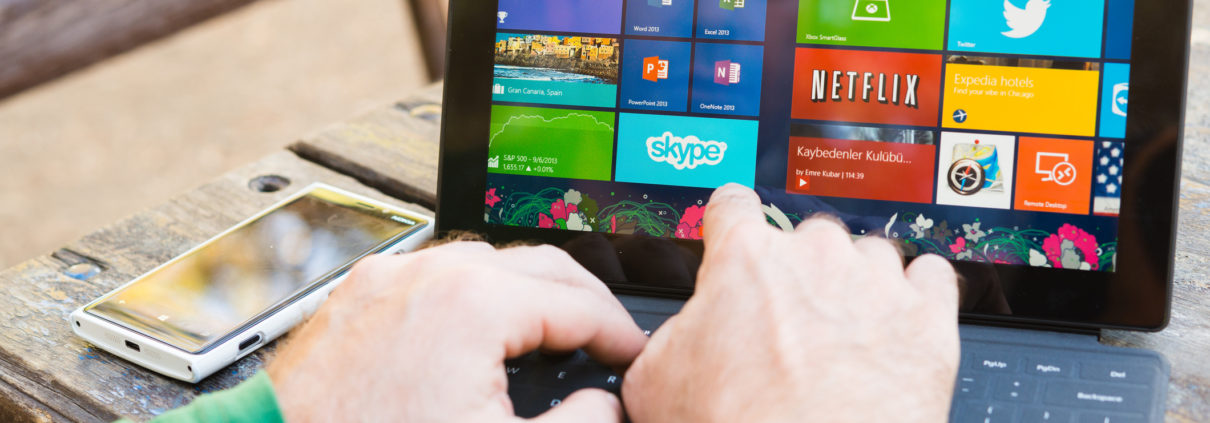Think of Microsoft ten years or so years ago and your mind’s eye will picture something completely different. A software giant, chugging along with its globe conquering Windows operating system and almost ubiquitous Office productivity suite. However, times have changed and the Redmond giant is increasingly being challenged by competition on the software front. From the likes of Apple with macOS and even Google with its ChromeOS.
Then there’s the mobile world where operating systems on smartphones are very capable platforms. With access to all manner of productivity tools; iOS 11 on the new iPad Pro is aiming squarely at the working world with features normally seen on Mac laptops and desktops. As a result, Microsoft has had to react and push their products. From pushing Office into the cloud. As well as, adding a bevvy of features from smart tools like Delve to virtual assistant integration with Cortana. With its expanded Surface range, Microsoft looks to be making a big play to make Windows devices more diverse and exciting again in the face of slick designed laptops and desktops from Apple.
Surface rising…
The Surface range now consists of four halo devices. 1. the Surface Pro 2. Surface Book 3.Surface Laptop 4. the Surface Studio.
Surface Pro
The surface pro is now available for purchase. Microsoft has given its 2-in-1 laptop-come-tablet a nip and a tuck. The process power has boosted with Intel’s 6th generation Kaby Lake chips. It’s improved battery life to 13.5 hours, models with fanless design and integration of the SSD with the device’s motherboard to save space.
The new Surface Pro is also lighter than its predecessor. There have been minor external tweaks such as, smaller vents on the top of the tablet. As well as, a new hinge to allow the tablet to be laid nearly flat with its keyboard accessory.
Whilst the changes over the critically-acclaimed Surface Pro 4 were minor, we remained impressed at the hybrid. In our opinion it sets the bar for how all 2-in-1 Windows hybrid should be designed.
Surface Book
The Surface Book has also been equipped with Intel’s Kaby Lake processors and models. With dedicated graphics cards gain access to Nvidia’s GeForce 965M graphics processing units (GPUs).
Other than a minor specs boost, there’s little to report on the refreshed Surface Book. It remains a high quality hybrid device with a nicely designed hinge and a specification that should satisfy all but the most power-hungry users.
However, we were a little disappointed with GPUs based on Nvidia’s Maxwell architecture rather than its latest more powerful Pascal GPUs. Which can offer near-desktop level performance in chips suitable for laptops.
Surface Laptop
The MacBook Air has for some time, held the benchmark for ultraportable laptop design. The likes of HP and Asus have aped its design for the Windows world. However, the venerable MacBook Air offers a combination of slick design, build-quality and solid performance on the go. It keeps its appeal despite its lack of change since 2015.
The Surface Laptop looks to upset that trend. Announced back in May, the laptop has a slim wedge-like design, a vibrant, high-resolution display, clever cooling, and a keyboard decked out in alcantara micro-fibre material.
To our eyes it’s a beautiful device to the look and touch. With the keyboard offering nice travel and feedback along with the Pixel Sense touchscreen display offering bright colours and excellent contrast. As well as, benign responsive to the touch and use with Microsoft’s take on the stylus the Surface Pen.
With a slimmed-down operating system in the form of Windows 10 S, there is an argument that the Surface Laptop is hobbled a bit with a limited OS.
However, Windows 10 S has been targeted at the education sector where there is more of a desire to ensure that the only apps accessible are those approved for the Windows Store. Thereby keeping resource hogging a third-party software away from the Surface Laptop and reducing the risk of getting malware infections.
People wanting the full-fat Windows 10 experience can upgrade to the OS for £50.
Sitting around the £1,000 mark, the Surface Laptop is not cheap. Although its hardware design and the amount of engineering that appears to have been put into the device, puts it in the premium device market.
The Surface Laptop is arguably one of the best Windows devices available and more than challenges the MacBook Air for the crown of quality ultraportable laptops.
From our perspective, the Surface Laptop acts as a halo device that sets the standard for Windows 10 laptops. It should see Microsoft’s hardware partners follow suit in designing laptops that ape the features and design cues of the Surface Laptop.
Surface Studio
All-in-one desktop PCs are often put to use by creative professionals. Such as, video editors, photographers and designers. However, Apple has held sway with its iMac. Microsoft’s Surface Studio looks to disrupt that by offering an all-in-one desktop. With a hinge that allows it to be tilted almost flat for use as a 28in PixelSense, a touchscreen canvas with the Surface Pen and Microsoft’s touchscreen control accessory, the Surface Dial.
The addition of a 4.5K resolution display that can be used as a digital canvas. Microsoft is offering a fairly unique device that other hardware firms have yet to mirror.
It not only looks good, feels good and performs well. Which makes it a very hard device to pick faults with. However, it comes at an eye-watering starting price at £2,999. Although, it does sport an Intel Core i5 processor, 8GB or RAM and a 2GB Nvidia GPU.
GMA can source the hardware and any accessories for you and ensure it is configured and ready for your team. Take a look at our surface range and Get in touch today!



